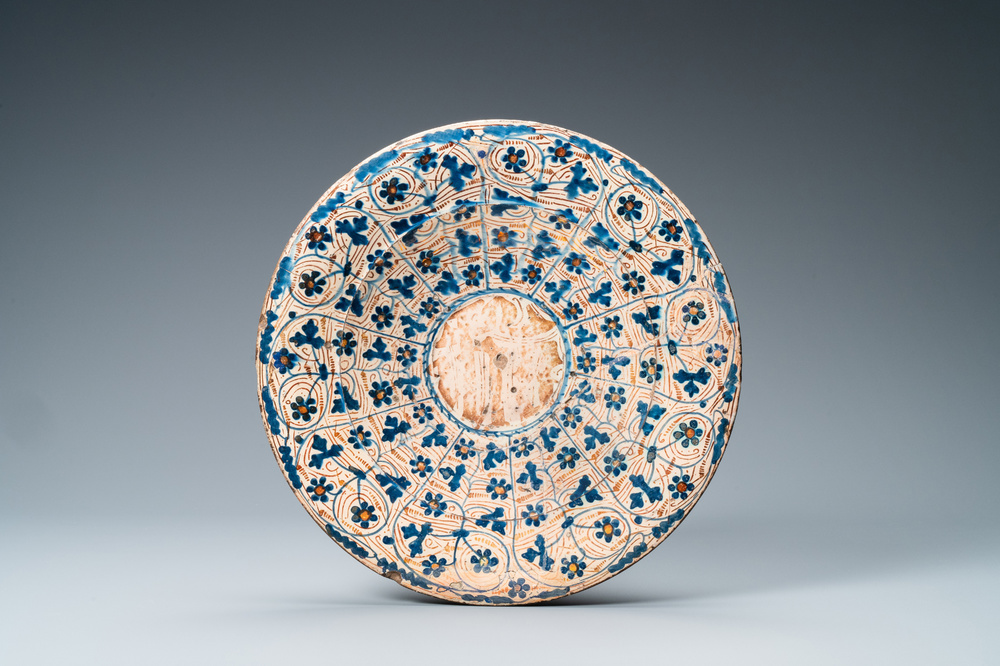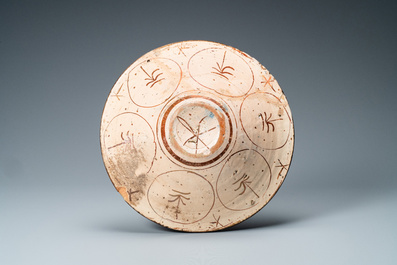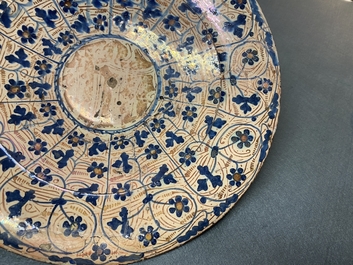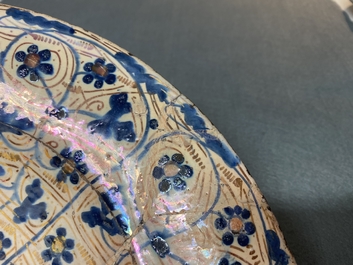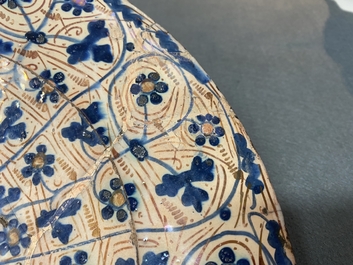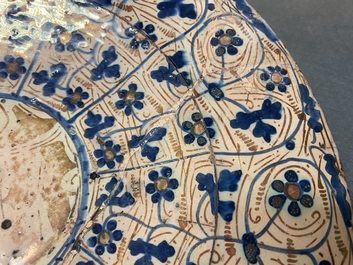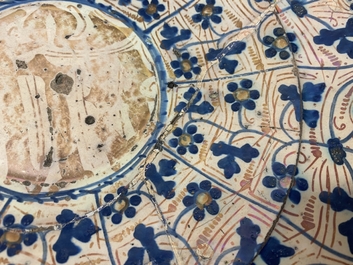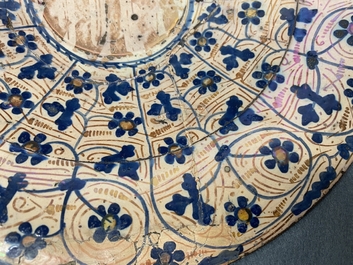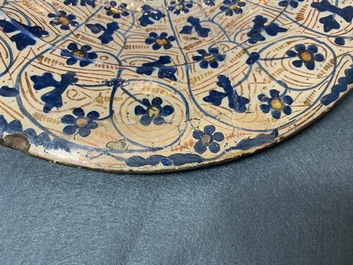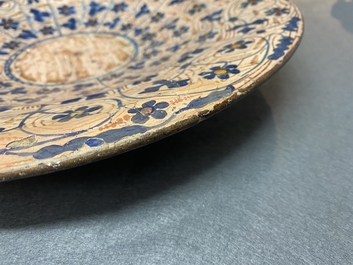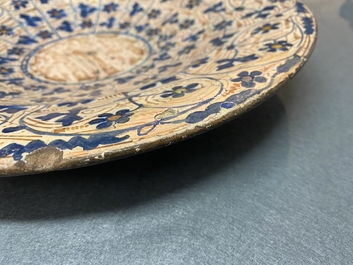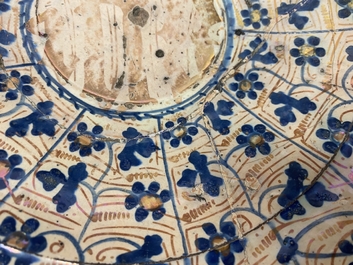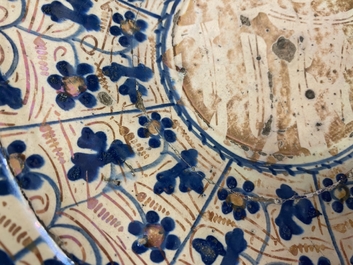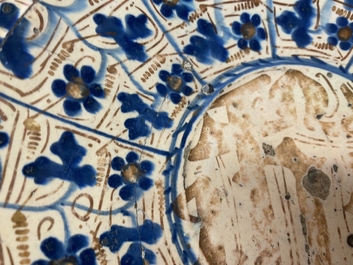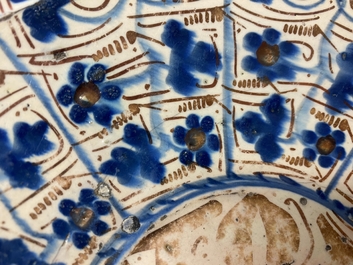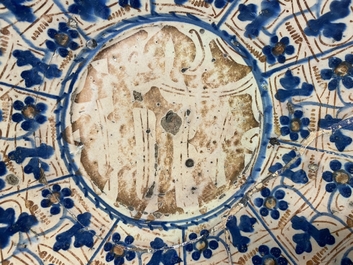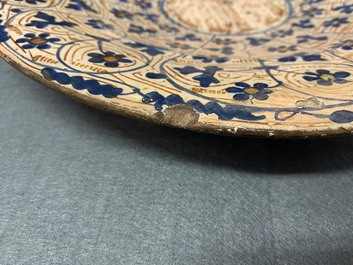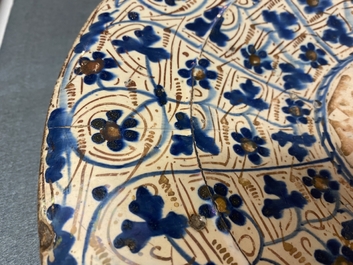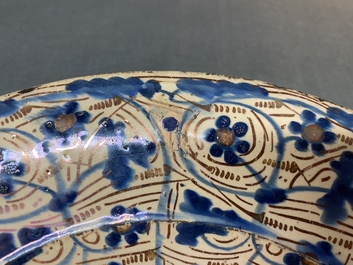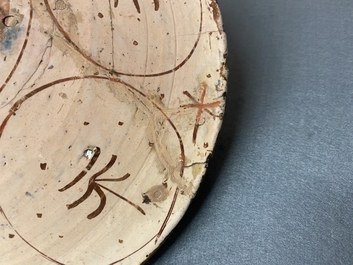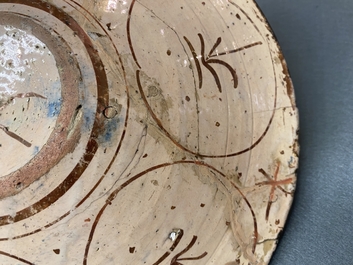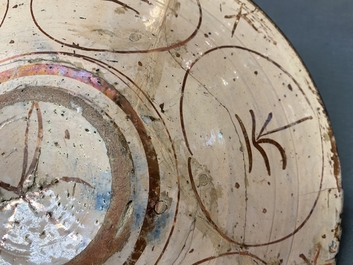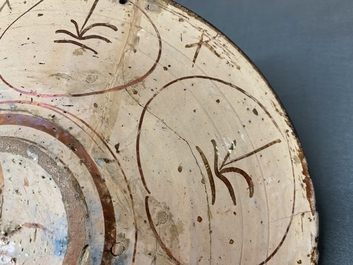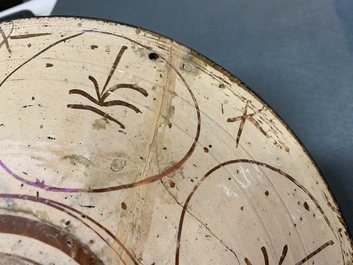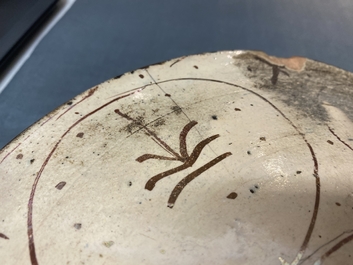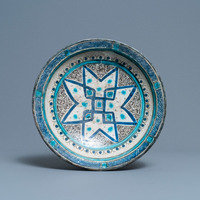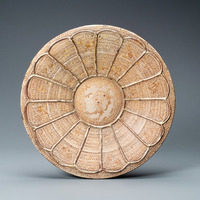Nous devons vérifier que votre inscription n'est pas une entrée automatique. Veuillez s'il vous plaît compléter le test suivant:
Un plat 'IHS' hispano-mauresque à émail lustré, Manises, Espagne, 15ème
Dia.: 33,5 cm
Condition: (UV-checked)
- With a section broken out and reglued between ca. 2 and ca. 6 o'clock, including a small triangular section between ca. 2 and 3 o'clock also fractured. Traces of removed old staple repairs.
- A circular hairline extending from this break, along the lower part of the central medallion and back upwards around it.
- A section of superficial glaze loss on the rim retouched around 6 o'clock.
- A ca. 8 cm hairline at ca. 10 o'clock.
- A filled and retouched drilled hole just below the rim at ca. 12 o'clock.
- Small superficial chips and glaze loss along the rim, as well as a few glaze pits throughout.
The radiating leaf, flower, and tendril decoration of this dish is characteristic of Valencian pottery, as is the golden-brown luster. Artisans created the iridescent luster surface by firing metal oxides onto ceramic objects in a special "reduction" firing, in which the kiln was starved of oxygen. Renaissance patrons prized lustered ceramics not only for their shimmering surfaces but also for their seeming transformation of base materials into gold-the dream of alchemists since the Middle Ages.
The export of such wares to Flanders and Italy is documented by the inclusion of Spanish lusterware in the Book of Hours of Engelbert of Nassau, by The Vienna Master of Mary of Burgundy, Claas Spierinc. (see third image, courtesy of the Bodleian Libraries, University of Oxford)
In Sam Fogg's exhibition catalogue 'Lustreware from Spain', a related example is shown (nr. 6). Here, it is noted that 'Only a tiny handful of chargers comparable to this example in form and decoration survive anywhere in the world. Examples closely matching ours in both respects are preserved in the Metropolitan Museum of Art in New York, the Burrell Collection in Glasgow, the British Museum in London, and the Cluny and Louvre museums in Paris. Several of these are so close in execution that they must have been produced in the same period and artistic orbit as ours, and perhaps even by the same group of master potter-painters . Almost without exception, they incorporate the same large, shapely curlicue of lustre that bisects the ascender of the central letter ‘h’. This motif, put to use within the Christian context of the sacred trigram, has its roots in Arabic script introduced to Spain during the long period of Islamic rule over the Iberian Peninsula, which lasted until the Reconquista in 1492. Its complete integration into the aesthetic repertoire of the Valencian potters speaks to the intensely complex and dialogic relationship between the two cultures during the Middle Ages, and the influence it exerted on Spanish art right up until the close of the Middle Ages and beyond. (link to catalogue)
Ref.:
- Christie's, New York, Oct. 20, 2020, lot 88, for a related larger example. (sold USD 81.250) (link)
- The British Museum, Museum number G.572, for a related example. (link)
- The J. Paul Getty Museum, object number 85.DE.441, for a related basin. (link)
- The Musée de Cluny, Paris, inv. CL2090. (link)
- The Louvre, Paris, inv. OA4032. (link)
- Sotheby's, Paris, Oct. 22, 2008, lot 4, for a smaller example. (sold EUR 31.950) (link)
